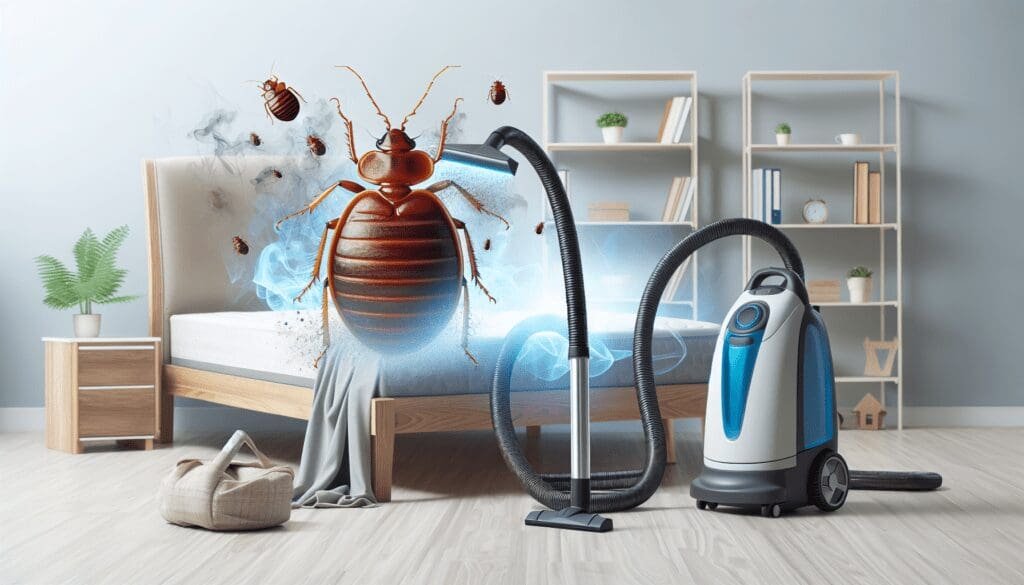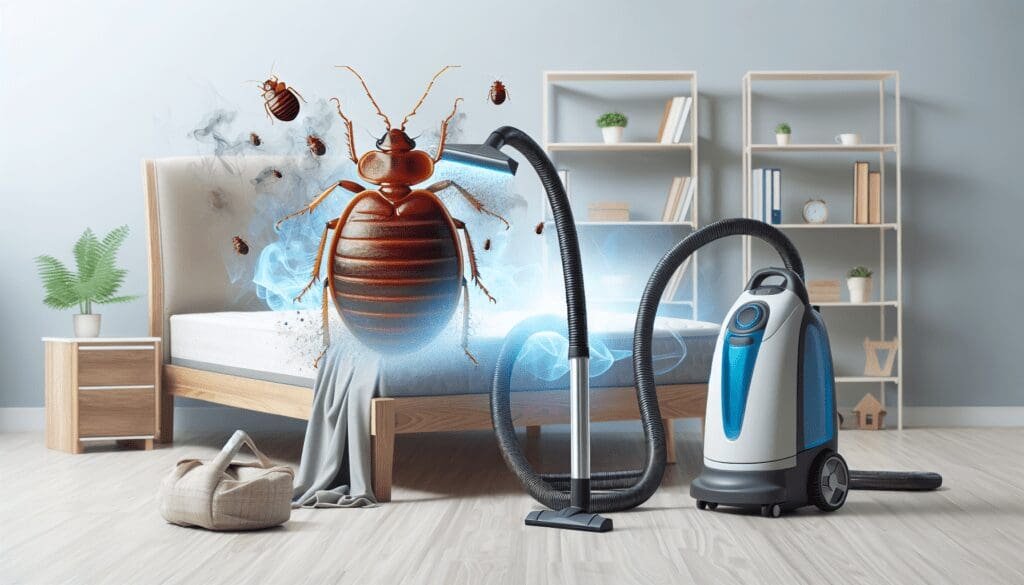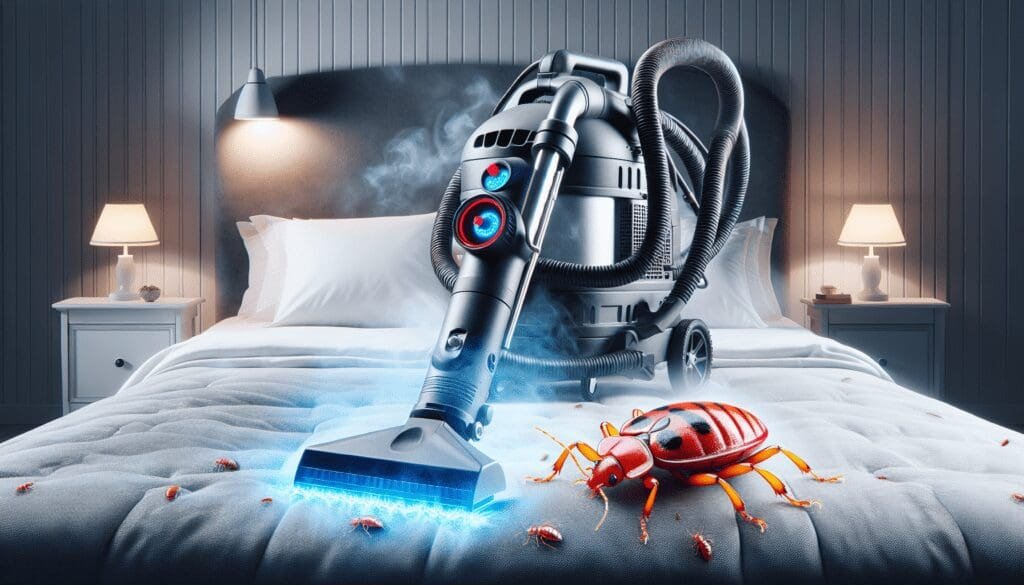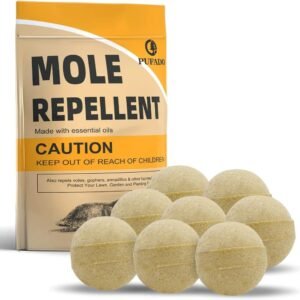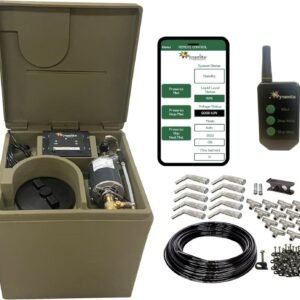Getting Rid of Bedbugs Quickly
Looking to get rid of bedbugs quickly? Look no further! In this step-by-step guide, we’ll provide you with all the information you need to eliminate these pesky pests. From identifying and inspecting for bedbugs to preventing infestations, we’ve got you covered. We’ll share tips on preparing the area, treating surrounding spaces, and treating the bed itself to ensure a thorough elimination process. Additionally, we’ll discuss reducing clutter, laundering infested items, and cleaning the affected areas. Plus, we’ll provide resources on preventative pest control and list the active ingredients in pesticides. With this comprehensive guide, you’ll be able to tackle bedbugs head-on and reclaim your peace of mind.
Identifying and Inspecting for Bed Bugs
Bed bug infestations can be a nuisance, but early detection is crucial in preventing the spread of these pesky insects. Recognizing the signs of a bed bug infestation is the first step in effectively addressing the problem. Keep an eye out for small reddish-brown insects resembling apple seeds, as well as tiny white eggs and dark spots on your bedding or surrounding areas.
Inspecting common hiding areas for bed bugs is essential to locate their hiding spots. Bed bugs are experts at hiding in hard-to-reach places, so it’s important to conduct a thorough inspection. Use a flashlight and a magnifying glass to check cracks and crevices in your mattress, box spring, headboard, and bed frame. Look for live bugs, shed skins, or black spots, which are signs of their presence.
Preventing Bed Bug Infestations
Taking preventive measures is key to avoiding bed bug infestations in the first place. Regularly vacuuming and cleaning your sleeping area can help remove any potential hiding spots and disrupt their lifecycle. Pay special attention to the seams and edges of your mattress, as bed bugs often hide in these areas.
Reducing clutter is another effective step in minimizing hiding places for bed bugs. Clear out any unnecessary items from your bedroom, as piles of clutter can provide ideal hiding spots. Keep your floors and surfaces clean and clutter-free to make it harder for bed bugs to find suitable hiding spots.
Sealing cracks and crevices is essential in eliminating entry points for bed bugs. Use caulk or sealants to seal any cracks or crevices in your walls, baseboards, and furniture. By doing so, you create a physical barrier that makes it harder for bed bugs to enter your living spaces.
Installing bed bug encasements on your mattresses and box springs is an excellent preventive measure. These encasements create a barrier that prevents bed bugs from infesting your sleeping area. Additionally, they make it easier to detect and treat any potential infestations.
Preparing the Area for Treatment
Before treating a bed bug infestation, it’s important to properly prepare the area. Start by removing all bedding and washable items, such as sheets, pillowcases, and blankets, and launder them using high heat. This ensures that any bed bugs or eggs present are effectively killed.
Dismantling bed frames and headboards allows for better access to potential hiding spots. Take apart these furniture pieces and thoroughly inspect each component. Pay close attention to joints, cracks, and screw holes, as these are common areas where bed bugs may hide.
In some cases, it may be necessary to take apart other furniture pieces, such as dressers or nightstands, to access potential hiding spots. Use caution and follow the manufacturer’s instructions when disassembling furniture.
Treating the Bed
Treating the bed is essential to eliminate bed bugs and prevent their return. Start by washing infested bedding, including sheets, pillowcases, and blankets, using the highest heat setting on your washing machine. High temperatures kill bed bugs and their eggs, ensuring a thorough treatment.
Using a bed bug spray specifically designed for mattresses and box springs can effectively eliminate bed bugs in these areas. Follow the instructions on the product label and apply the spray evenly to the infested areas. Be sure to target seams, edges, and other hiding spots where bed bugs may be present.
Applying a bed bug dust to cracks and crevices can provide an additional layer of protection. Bed bug dusts contain desiccant materials that dehydrate and kill bed bugs. Use a duster to apply the dust to potential hiding spots, such as joints, screw holes, and the inside of electrical outlets.
Cleaning the Affected Area
Cleaning the affected area is crucial in removing any remaining bed bugs and their eggs. Start by thoroughly vacuuming infested areas using a vacuum cleaner with a high-efficiency particulate air (HEPA) filter. Pay close attention to seams, crevices, and cracks, as bed bugs may still be present in these areas.
After vacuuming, clean and disinfect furniture surfaces using a mild detergent or alcohol-based cleaner. Wipe down all surfaces, including bed frames, headboards, and nightstands, to ensure any remaining bed bugs or eggs are removed.
For carpets and upholstery, steam cleaning can be a highly effective method of eliminating bed bugs. The high temperatures produced by steam cleaners kill bed bugs and their eggs on contact. Make sure to move the steam cleaner slowly across the surface to ensure thorough treatment.
Treating Surrounding Areas
Treating surrounding areas is crucial in preventing a reinfestation of bed bugs. Apply an insecticide specifically designed for bed bugs to baseboards and floor cracks. Follow the product label instructions closely and ensure that pets and children are kept away from treated areas.
Treat furniture, curtains, and other hiding places using a specific bed bug spray or dust. Thoroughly inspect and treat all potential hiding spots, paying close attention to seams, tufts, and folds. Remember to use caution and follow the instructions provided by the product manufacturer.
In tight spaces where bed bugs may hide, such as electrical outlets or gaps behind baseboards, a crack and crevice aerosol can be used. These products have a narrow spray pattern, allowing for precise application in hard-to-reach areas.
Using Effective Bed Bug Products
Choosing the right bed bug products is crucial for effective treatment. When selecting a bed bug spray, look for products specifically labeled for bed bug control. These sprays often contain active ingredients such as pyrethrins or pyrethroids, which are effective against bed bugs.
Bed bug dusts, on the other hand, work by dehydrating and killing bed bugs. Look for dusts that contain active ingredients such as diatomaceous earth or silica gel. These desiccant materials are safe for humans and pets but lethal to bed bugs.
Using bed bug-specific insecticides can provide targeted and effective treatment. These products are specifically formulated to address bed bug infestations and often come in convenient spray or dust formulations. Read the product labels carefully and follow the instructions for safe and effective use.
Finally, check for EPA-registered products when choosing bed bug control solutions. The Environmental Protection Agency (EPA) registers products that have been tested for safety and effectiveness. Look for the EPA registration number on the product label to ensure you are using a reliable and trusted treatment option.
Application of Insecticides
When using insecticides to treat bed bugs, it’s crucial to read and follow the product labels carefully. The labels provide important information on application rates, safety precautions, and necessary protective equipment.
Preparing insecticide solutions correctly is essential for effective treatment. Follow the instructions on the product label to ensure the correct dosage and mixing ratio. Use measuring devices, such as cups or syringes, to accurately measure the insecticide and water.
Applying insecticides safely and effectively requires taking necessary precautions. Wear protective clothing, such as gloves and a face mask, to minimize exposure to the insecticide. Ensure proper ventilation in the treated area and avoid applying insecticides near food preparation or eating areas.
During application, carefully target the areas where bed bugs are likely to hide, such as crevices, cracks, and other hiding spots. Apply the insecticide evenly and thoroughly, adhering to the instructions provided by the product manufacturer. Keep pets and children away from treated areas until the insecticide has dried completely.
Professional Pest Control Services
For severe bed bug infestations, considering professional help may be the best course of action. Professional pest control companies have the expertise and experience in dealing with challenging infestations. They can provide comprehensive treatment options tailored to your specific situation.
When researching and hiring a pest control company, it’s important to choose a reputable and reliable service provider. Look for companies with a proven track record in bed bug control and positive customer reviews. Ask for referrals from friends, family, or neighbors who have previously dealt with bed bug infestations.
Professional treatment offers several benefits, including thorough and effective treatment methods. Pest control professionals have access to industrial-strength products and techniques that may not be available to homeowners. They can also provide ongoing monitoring and maintenance to ensure the infestation is completely eradicated.
Monitoring and Prevention
Even after successfully eliminating a bed bug infestation, it’s important to remain vigilant and implement preventive measures. Regularly inspecting for signs of bed bugs can help catch any potential infestations early on. Keep an eye out for small reddish-brown insects, shed skins, or black spots on bedding or furniture surfaces.
Maintaining cleanliness and hygiene practices is crucial in preventing bed bug infestations. Regularly vacuum and clean your sleeping area, including mattresses, box springs, and headboards. Launder bedding and washable items frequently using high heat to kill any potential bed bugs or eggs.
Implementing preventive measures can help avoid reinfestation. Reduce clutter in your living spaces, as piles of clutter provide ideal hiding spots for bed bugs. Use bed bug encasements or liners on mattresses and box springs to prevent bed bugs from infesting your sleeping area.
By following these steps and being proactive in monitoring and prevention, you can effectively control and prevent bed bug infestations in your home. Remember to utilize effective bed bug products, follow label instructions carefully, and consider professional help for severe infestations. With proper care and attention, you can create a bed bug-free environment and enjoy a peaceful night’s sleep.
GO TO MY SECRETS AND PROFESSIONAL PEST CONTROL PRODUCTS
